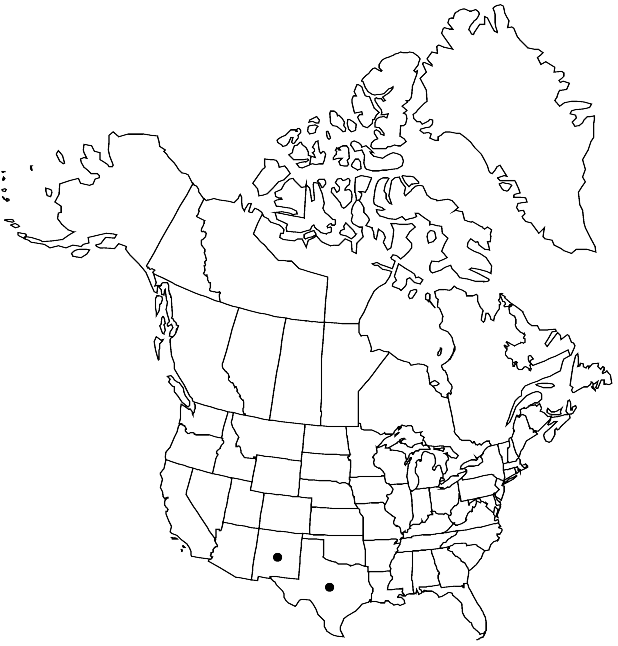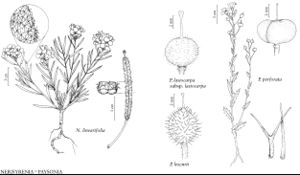Nerisyrenia linearifolia
Pittonia 4: 225. 1900.
Plants with woody caudex; moderately to densely pubescent. Stems (0.5–)1–4 dm, woody proximally, densely to moderately pubescent. Cauline leaves sessile or nearly so; blade linear to linear-oblanceolate, 1.5–7 cm × 1–4.5 mm, (fleshy), base attenuate, margins usually entire, rarely dentate, apex acute to obtuse. Racemes to 3.5 dm in fruit. Fruiting pedicels 0.6–1.4 cm, densely pubescent. Flowers: sepals broadly lanceolate to ovate, 4.8–7.5 × 1–2 mm; petals obovate to spatulate, 8–12(–13) × 5–8.5 mm, (often flattened), claw to 2 mm, (margin dentate); filaments 4–6 mm; anthers 2.5–3.5 mm. Fruits terete to slightly angustiseptate, 0.9–3 cm × 1–2.2 mm; ovules 30–80 per ovary; style 0.9–4 mm. Seeds 0.5–0.7 × 0.4–0.5 mm. 2n = 18, 19, 20, 34, 36.
Phenology: Flowering Apr–Dec.
Habitat: Gypsum soils in knolls, bluffs, open flats
Elevation: 1000-1200 m
Distribution

N.Mex., Tex., Mexico (Coahuila, Nuevo León, San Luis Potosí, Tamaulipas).
Discussion
Both J. D. Bacon (1978) and R. C. Rollins (1993) recognized two weakly defined varieties of Nerisyrenia linearifolia distinguished primarily on the position of the widest portion of the fruit. Of those, var. mexicana Bacon (Coahuila, Mexico) has fruits widest near the base instead of the middle.
Selected References
None.
